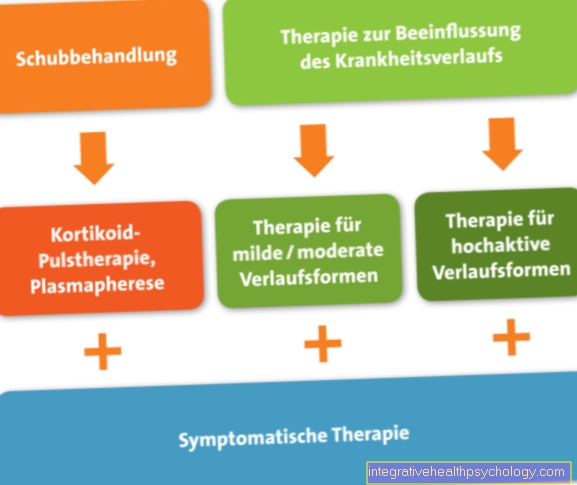Maternity Benefit - Everything about the topic!
What is Maternity Allowance?
The maternity allowance is a cash benefit for mothers that is intended to secure income during the period in which employment is prohibited to protect the mother. It can be applied for at the earliest seven weeks before the calculated due date. The maternity allowance is paid by the statutory health insurance companies and covers the duration of the statutory protection periods before and after the child is born.

When will I start receiving maternity benefit?
During pregnancy, the doctor issues a certificate stating the presumed day of delivery. The maternity protection period is calculated based on this date; it begins six weeks before the calculated delivery date. The mother-to-be can use this certificate to submit the application for maternity allowance at the earliest seven weeks before the calculated delivery. The payment of the maternity allowance differs from one health insurance company to another. Payment is usually made within six weeks prior to the calculated delivery date. If the payment is delayed, you can ask the health insurance company and accelerate the payment if necessary.
Read more about this at: Maternity Protection
When is the maternity benefit paid?
The payment of the maternity allowance differs from one health insurance company to another. You apply for payment no earlier than seven weeks before the expected birth. Payment is usually made within six weeks prior to the calculated delivery date. If the payment is delayed, you can ask the health insurance company and accelerate the payment if necessary.
How long will I get maternity benefit?
The maternity allowance is paid during the statutory maternity protection period. So six weeks before the calculated due date until eight weeks after the birth at the earliest.
If the birth is earlier than calculated, the days not used by the mother will be added to the protection period. If the child arrives later than expected, the mother still has a maternity leave period of eight weeks after the birth. In the case of multiple or premature births, the period is extended to twelve weeks from the time of delivery. This means that the maternity protection period can vary in length. During this period, the mother receives the maternity allowance.
Find out more at: Maternity allowance
Where can I apply for maternity benefit?
Voluntarily or compulsorily insured mothers-to-be can apply for maternity benefit directly from the statutory health insurance company with which they are insured. In order to receive an employer's subsidy, a medical certificate stating the expected delivery date must also be given to the employer.
Expectant mothers who have family or private insurance should not apply for maternity benefit to the health insurance company, but to the responsible maternity benefit office of the Federal Insurance Office. In this case, the Federal Insurance Office pays the maternity allowance and not the (statutory) health insurance.
How can I apply for maternity benefit?
In order to apply for maternity benefit, there are certain requirements. Either the mother must have an employment relationship, it must have been terminated during the pregnancy or an employment relationship must be started after the start of the protection period.
Another requirement is that the expectant mother is a member of a statutory health insurance company and is entitled to sick pay. This means that only voluntarily or compulsorily insured members of the statutory health insurance are entitled to maternity benefit. If the requirements are met, you can apply for maternity benefit at the earliest seven weeks before the calculated date of birth of the child. To do this, you first have a doctor issue a certificate stating the expected due date. You will receive an application form from your health insurance company that you fill out and sign with your personal details, bank details and precise details of the (current) employment relationship and employer. Both documents are submitted to the statutory health insurance.
You can also submit an application for an employer subsidy by showing your boss the medical document with the calculated due date.
Expectant mothers are also entitled to parental allowance. You should therefore also read our article on: How to apply for parental allowance!
What is the maximum and minimum maternity benefit?
In principle, the amount of maternity benefit is based on the average net salary of the last three calendar months billed. One-off payments such as vacation or Christmas bonuses are not taken into account. In the calculation, the wage tax must be taken into account as it was to be calculated or withheld by the employer in the calculation period.
The health insurance fund pays a maximum of EUR 13 maternity benefit per day. If you earn more than 13 euros net a day, i.e. more than 390 euros a month, the employer is obliged to pay the difference as a supplement to maternity benefit. Usually this is the higher percentage. That is why the application for an employer subsidy is very important when applying for maternity allowance. If you earn less than EUR 390 net a month on average, the maternity allowance from the health insurance company is lower.
Those who do not have statutory health insurance are entitled to a reduced maternity allowance of a maximum of EUR 210 from the Federal Insurance Office. This applies to employees of private health insurance as well as to women with family insurance and marginal employment.
How can I calculate the maternity allowance?
In order to calculate the maternity benefit, you need the deductions from the last three months before the maternity protection period. The monthly net wage for these three months is converted to the calendar day. For example, if an expectant mother earns 2,750 euros gross during this period, that makes a net wage of 1,776 euros. In this example, we assume that the woman received exactly the same amount in each of the three months.
Calculation: (1776 euros x 3) / 90 = 59.20 euros
That makes 59.20 euros per calendar day. Since the health insurance company only pays 13 euros per calendar day, the employer provides a subsidy of 46.20 euros. In most cases, the greater part of the maternity benefit is borne by the employer. The statutory health insurance pays a maximum of 390 euros per month. If the mother-to-be earns more than EUR 390 per month during the calculation period, the employer is obliged to pay the difference in the form of a subsidy to the maternity allowance.
How does maternity benefit flow into the tax return?
Both the maternity allowance and the contribution to the maternity allowance from the employer are generally tax-free. The benefits still have to be entered in the tax return. For the 2017 income tax return, the maternity allowance must be entered in line ninety-six on page four of the main form.
What is the difference between maternity benefit and parental benefit?
The maternity allowance and the parental allowance are financial family benefits in Germany that are intended to help secure the economic existence of the family when the family grows. Maternity allowance is paid to the mother six weeks before to eight weeks after the child is born. This is the period during which the expectant mothers are not allowed to work and are not allowed to work.
The Parental benefit is only paid for twelve months from the time of birth. Parental allowance offers the option of receiving 50% of the amount for a longer period of time as part of ElterngeldPlus in order to make it easier to return to work. While the maternity allowance is only paid to the mother, a partnership bonus can be paid out with the parental allowance if the father and mother share the care of the child. The parental allowance can be paid out more flexibly and over a longer period than the maternity allowance.
Both parental allowance and maternity allowance depend on the average net income in the months prior to the birth and are calculated differently. While maternity allowance is requested from the statutory health insurance, there is a so-called parental allowance fund for parental allowance. The maternity allowance helps the expectant mothers to finance the time around the birth, as they are not allowed to work during this period. The parental allowance helps both mother and father financially to bridge the first twelve to twenty-four months after the birth of the child and is intended to simplify reintegration into working life.
Are you more interested in this topic? Read more about this at: Parental allowance
Can maternity benefit be seized?
In principle, the maternity benefit cannot be seized. Earmarked social benefits such as maternity allowance, education allowance, child benefit, unemployment benefit or housing benefit are used to guarantee the subsistence level. These services are in no way attachable.
Special features of the maternity allowance for civil servants
Maternity protection is specially regulated for civil servants. You have the same protection periods as non-civil servant mothers six weeks before to eight weeks after the birth of the child. Civil servants have a full entitlement to salary during maternity leave, i.e. the further payment of their wages.
The payout may decrease. This applies, for example, if previously paid overtime payments are no longer applicable during the prohibition of working hours of more than eight and a half hours. At the same time, however, allowances are still granted. In this way, civil servants' economic livelihood is secured during the protection periods. Civil servants are entitled to subsidies during the ban on employment. These are regulated differently in the federal states and in Hesse, for example, correspond to 13 euros per calendar day.
Special features of maternity allowance for a student
Pregnant female students are subject to the same maternity protection period as non-studying expectant mothers. The period begins six weeks before the delivery and usually ends eight weeks after the delivery. The maternity allowance of the statutory health insurance is paid to voluntarily or compulsorily insured members.
Female students who are marginally employed and who are members of the statutory health insurance are entitled to up to EUR 13 maternity benefit per calendar day. If the average net wage is more than 390 euros, the employer pays the difference as an employer allowance. Privately insured or family insured women can receive maternity benefit from the Federal Insurance Office up to a maximum of 210 euros.
Does the maternity allowance count towards Harz 4?
Hartz 4 recipients who only receive unemployment benefit 2 are not entitled to maternity benefit. The so-called top-ups who receive Hartz 4 and work in a mini job are entitled to maternity benefit if they have family insurance or statutory health insurance. Then the maternity allowance is 210 euros. This sum is then paid out as a lump sum by the Federal Insurance Office.
If you as a Hartz 4 recipient earn more than 390 euros net per month, there is also an employer subsidy here. In this case, the cash benefit is regarded as income and there is an exemption of 100 euros for the full maternity benefit.





























